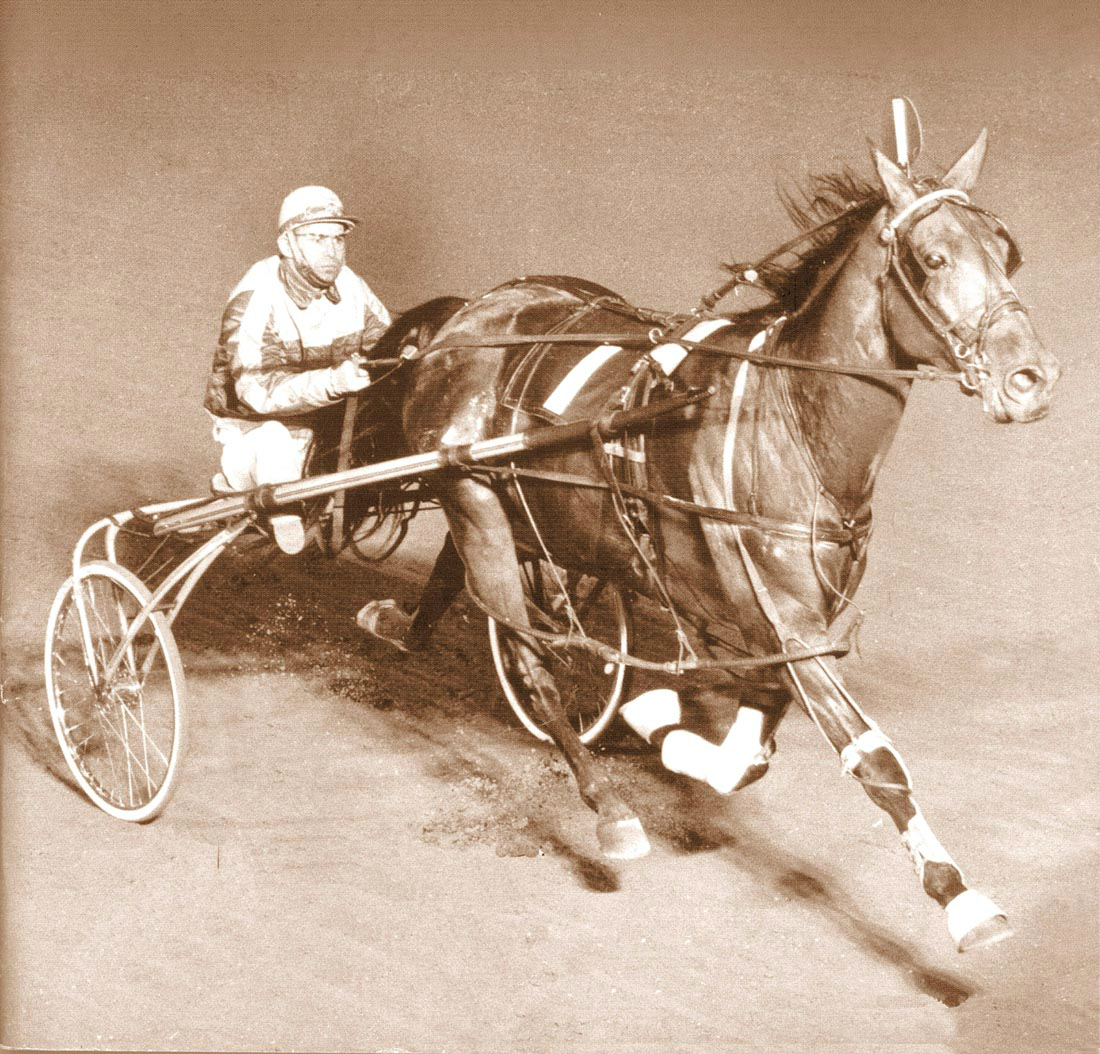The grand harness racing breed known as the Standardbred has gone through a huge transformation, particularly since the 1950’s.
Back then—and well before then—the breed was known for its endurance with records for distances well over the standard one mile route, multiple heat events—some going eight heats or more—and horses racing into their 20’s.

Probably the most extreme examples are Conqueror’s record for 100 miles—yes, 100 miles—in 8:55:33 back in 1853, and Abax racing for purse money at the age of 26.
Another horse— I believe his name was War Admiral—made 126 starts one year…earning all of $468 and change.
Talk about durability, there are three different examples right there.
But times have changed.
With durability now beginning to be put on the back burner, a lot has changed…and I am not sure for the better or the bettor.
Years ago—maybe 40 years ago—I would stand on the corner of Main Street and South Street in Freehold, New Jersey, and have grand conversations with the one-and-only Dick Baker who, for many years, was Stanley Dancer’s right hand man.
It didn’t matter that it was 20 degrees on a cold day, Dick Baker made it feel like 75 with his lively conversations and remembrances.
He told me about Stanley with a stopwatch in his hand (and in his head) and his strategy to win, win, win.
“He’d take a good horse and make them a great one just by his ability to rate them after a fast opener,” he said.
“I remember once when he was driving Cardigan Bay when he said he thought he could get him to the top in :28 and then try and get to the three-eighths in :44 1/2 or :45.
“He looked down at his watch at that pole and, after the race, said he got to the three-eighths in :44.4 and a minute to the half and knew it was all over.
“A :28 final quarter took care of things and Cardigan Bay was in the winner’s circle.”
My, how times have changed.
There’s no such thing as a :32 second breather anymore and, to tell you the truth, while everyone is enthralled with speed, the question that looms is whether it is in the best interests of the sport.
Back in the 1960’s and 1970’s, if a two year-old went an ultra-fast quarter en route to even a 2:05 mile, it was questionable whether that kind of mile would “cork” them, leaving them empty for continued improvement.
Harness horse publications would feature a 2:10 two year-old list and a 2:05 three year-old list.
Today, it takes a performance some 75 lengths faster or more to be in the elite group.
With the speed today and a shortage of horses in the entry boxes, a worrisome trend is developing that the speed may take its toll on the horse population—either by injury or by prevention of injury with stallions and mares entering a new phase in their respective careers.
And what about the owners who get frustrated with a horse that can race in 1:48 and come home without a check!
With “4” claimers going faster than Bret Hanover ever paced, it’s only a matter of time when the racing population shrinks by the numbers and the number of aged horses will be significantly lower with fewer and fewer horses even six and up helping fill programs.
True that, as racetracks close, they have to go somewhere but, at some point, an owner is going to say that this is a losing battle with inflation—sawdust piles costing $1,500 to $1,800 with feed, showing and vet care getting more expensive with stagnant purses.
Veteran Hall of Fame driver and trainer Wally Hennessey has seen this trend already developing over the past few years.
“First of all,” Hennessey remarked, “there is little rating that goes on today.
“When I first started in the Maritimes—and it’s still true today—there are no infield timers and we all really needed to learn to develop a stopwatch in our heads.
“Today, if you’re lucky, you get a breather for a few seconds—maybe a 16th of a mile.
“It’s go-go-go-go-go all the way. I remember I got called in for trying to rate my horse and going a slow second quarter. I told the judge that ‘maybe the first quarter was too fast!’
“When I get a call to catch-drive, I consider myself working for the trainer, owner, caretaker and bettor and my aim is to try and win or, at least, be on the board.
“Us veterans have had to really adjust and adapt to the new ways on the track with the tracks the way they are, the bikes and all the new equipment that can benefit a horse’s quickness.”
But that is taking a toll on the horse population staying on the racetrack.
“Just look at the entry box at some of the tracks these days. We’re down to three days a week at some venues—so it’s even tougher to make a living no matter whether you are a driver, trainer or owner,” Hennessey continued.
“Some say ‘speed kills,’he said, “and, let me tell you, a bettor or owner seeing his ‘4’ or ‘6’ claimer get to the half in :54 knows they are not going to make a dime this race…but the bills continue!”
Speed might be great for the elite, but, for the entire sport and its many participants, not so sure.
Only time will tell…
by John Berry, for Harnesslink
(Got an idea for a story? Contact John Berry at Johnberry@harnesslink.com)

 USA
USA Canada
Canada Australia
Australia New Zealand
New Zealand Europe
Europe UK / IRE
UK / IRE



